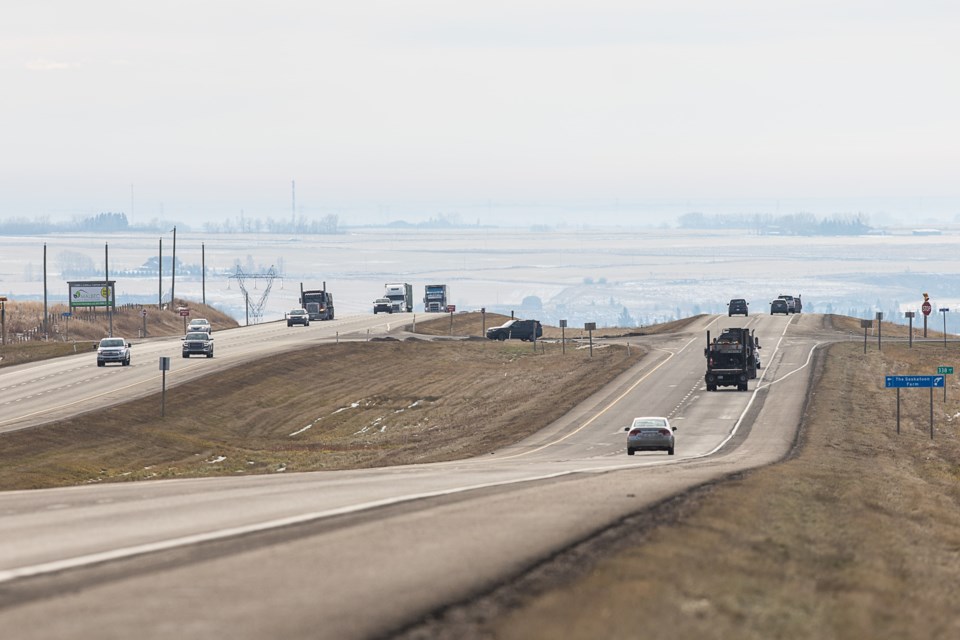I’ve driven all over, but I have to say the oft-terrifying concept of at-grade intersections on major highways is something I can’t recall encountering until I moved to Alberta.
Back in the spring on one of our first weekends in Okotoks, my wife and I decided to see what Saskatoon Farm is all about. We had been intrigued after reading about the agri-tourism destination, so we plugged the address into Google Maps and began the drive, eventually turning right on 338 Avenue and following it east toward Highway 2. That’s where we encountered a stop sign.
“It’s saying to go straight,” my wife said of the directions we were getting from the app.
“I know it’s saying to go straight, but that can’t be right,” I responded. “It’s a four-lane highway, surely they’re not expecting me to cross it.”
Apparently, they were.
I sat there for a moment, trying to make sense of the task ahead while watching a steady stream of traffic zip by at well in excess of 100 km/h. Although I’ve got a pretty good idea how big a gap is required to safely make a left turn with oncoming traffic travelling at 50 km/h, my frame of reference for shooting across a major highway with vehicles doing double that speed is much more limited, so I likely sat there far longer than was necessary before finding sanctuary in the median.
The second half came easier as I soon realized I didn’t need a gap big enough to land a 747, but the whole experience was a little unnerving. It reminded me of my first encounter with an at-grade highway intersection in Alberta, which took place about a year earlier while leaving the University of Alberta Botanic Garden just north of Devon.
That time, rather than simply crossing the highway, I was forced to make a left turn onto it, which meant that I had to, from a dead stop, turn my four-cylinder Santa Fe into the fast lane of a divided highway with a 100 km/h speed limit. It was late afternoon and the stream of traffic was steady, so I don’t know exactly how much time I spent in the median before I finally made the turn, but I believe it was long enough that my wife got out to stretch.
I suspect, like anything, the more you navigate these at-grade intersections, the more comfortable you become, but there’s still something inherently dangerous about the relationship between fast-moving traffic and vehicles at a virtual standstill. It’s heartening to see various levels of government getting together to finally address this situation along Highway 2, but I’m mystified why an interchange at 338 Avenue, which is also part of the plan, is still years away.
Closing the medians makes sense safety-wise, but given we’re talking about a bridge across four lanes of traffic with on- and off-ramps, why is an interchange potentially going to take five years or more? I’ve seen infrastructure projects of much greater scope take far less time.
It’s one thing to do away with unsafe situations, but providing a safe alternative is necessary too.




